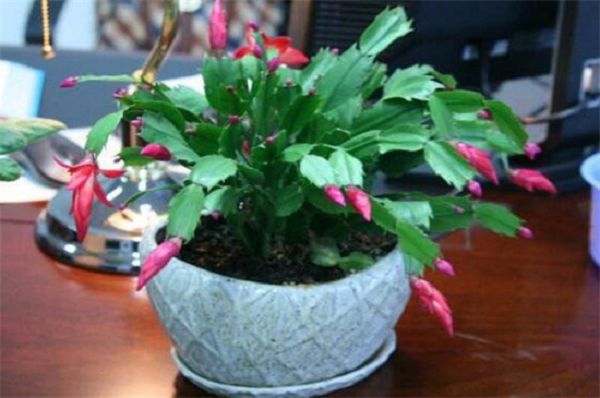Cultivation and Management methods of Magnolia
Clivia cultivation and management can start from the following aspects, only to master some of its common sense, in the breeding will be handy.
1. Moisture:
Plant growth is inseparable from water, its nutrient absorption and physiological activities must rely on water.
Clivia likes neutral or slightly acidic water with a pH of around 6.5. In addition, we know that the pH of water quality varies from place to place. If it is not neutral or slightly acidic water, we should consider improving it. For example, alkaline water can be neutralized by rice washing water. Clean mineral-rich water is best. Tap water is treated with artificial chemicals and should usually be stored for a few days before being used to water flowers. The moisture content in the soil should be neither dry nor wet. The watering should be carried out reasonably according to the principle of neither dry nor watering. If the moisture content in the soil is too high for a long time, the air permeability in the soil will become poor, which will cause rotten roots. On the contrary, the moisture content is too low, which will cause dehydration, resulting in dry and withered roots.
In addition, it should be noted that watering the so-called dry is not equal to no water, but that when the water content is relatively low can be watered, noon temperature is too high should not be watered, in the morning and evening watering is the best, and watering should avoid flower heart, especially during the flowering of the arrow, to prevent water is not clean caused rotten heart.
2. Soil:
Clivia root for the fleshy roots, suitable for loose, fertile, permeable, good permeability of soil growth, so humus is the first choice to raise Clivia. Humus is best oak leaves (oak leaves), other leaves such as larch, hazelnut, pear, apple trees can also be, but pay attention to pesticide factors. Walnut leaves are poisonous and cannot be used. High-quality humus should be moderately decayed tree leaves with a decay rate of about 50%. In addition, different areas of soil pH is different, should choose neutral or slightly acidic soil, PH value between 6.5-7.
3. Light:
As the saying goes, all things grow by the sun, so light is an indispensable element for any plant. Clivia also needs sufficient sunlight, but it is not resistant to strong light. Shading treatment should be done under strong summer light to avoid burning leaves. Clivia leaves have a strong phototropism, in culture if there is regular adjustment to the light angle, you can make plant growth neat. Its leaves should be kept clean, often with a soft damp cloth to wipe off dust on the leaves, conducive to photosynthesis.
4. Fertilizer:
Clivia is a fertile flower, so fertilizer is an essential source of nutrients for Clivia vigorous growth. Although it is a fertile flower, but also to do the right amount of fertilizer, too much or too little on the growth of Clivia are unfavorable, too much, will lead to burning roots, leaves pleated or pier; too little, lack of nutrition, Clivia slow growth, leaves significantly narrowed, soft not straight.
Fertilizer is divided into solid fertilizer and liquid fertilizer. Solid fertilizer: castor seeds, thread hemp seeds, sunflower seeds, perilla, etc. fried, add a small amount of bone meal is a very good solid fertilizer. Solid fertilizer is usually used as base fertilizer (base fertilizer and waist fertilizer) and is applied twice a year (April-May in spring and September-October in autumn), but it must not touch the roots to avoid root burning.
Liquid fertilizer: sesame, peanut, thread hemp seed, sunflower seed, freshwater fish (to viscera), etc. after full fermentation is a good liquid fertilizer. Liquid fertilizer as supplementary fertilizer, fertilizer efficiency fast, but fertility short, can be applied once every half month. The application of liquid fertilizer should be based on the principle of low concentration and small amount of multiple times to prevent hypertrophy and root burning. Spring and autumn clivia growth exuberant, liquid fertilizer should be applied to provide adequate nutrients. Liquid fertilizer should be applied to prevent dripping to the orchid leaves or orchid heart, so as not to rot leaves or rotten heart, after each fertilization, spray water with a watering can to wash orchid leaves or orchid heart.
5. Temperature:
Because Clivia is a semi-negative plant, the suitable temperature for Clivia growth is 15℃~25℃. Summer 25℃ above should take ventilation, shading and other methods to cool down, more than 30℃ and humidity will make the leaves luster decline, high temperature water will make the leaves grow too long, high temperature will even appear high fever disease, resulting in the whole plant rot. Below 10℃, growth will be slow, below 5℃ growth will be inhibited, below 0℃ leaves will freeze or die.
- Prev

How to prune after the crab claw orchid, the remnant flower micro-cut and re-cut the dense branches.
How to prune after the crab claw orchid, the remnant flower micro-cut and re-cut the dense branches.
- Next

Five key points of cultivation and Management of Cymbidium
Five key points of cultivation and Management of Cymbidium
Related
- Is the orchid suitable for indoor use? Is it good for the body?
- How to prevent the empty root of orchids?
- What to do after the crab claw orchid is withered?
- Why are the leaves of orchids always yellow? Fertilizing and watering.
- Can the root of the gentleman orchid be saved if it is rotten?
- Diagnosis and treatment of cotton-blowing beetle insects in Cymbidium
- There is a way for a gentleman's orchid to rot.
- What is the most suitable temperature and humidity for the orchid?
- How to raise a gentleman's orchid? Cultivation techniques of Cymbidium
- How to prepare the nutritive soil for the cultivation of Cymbidium

